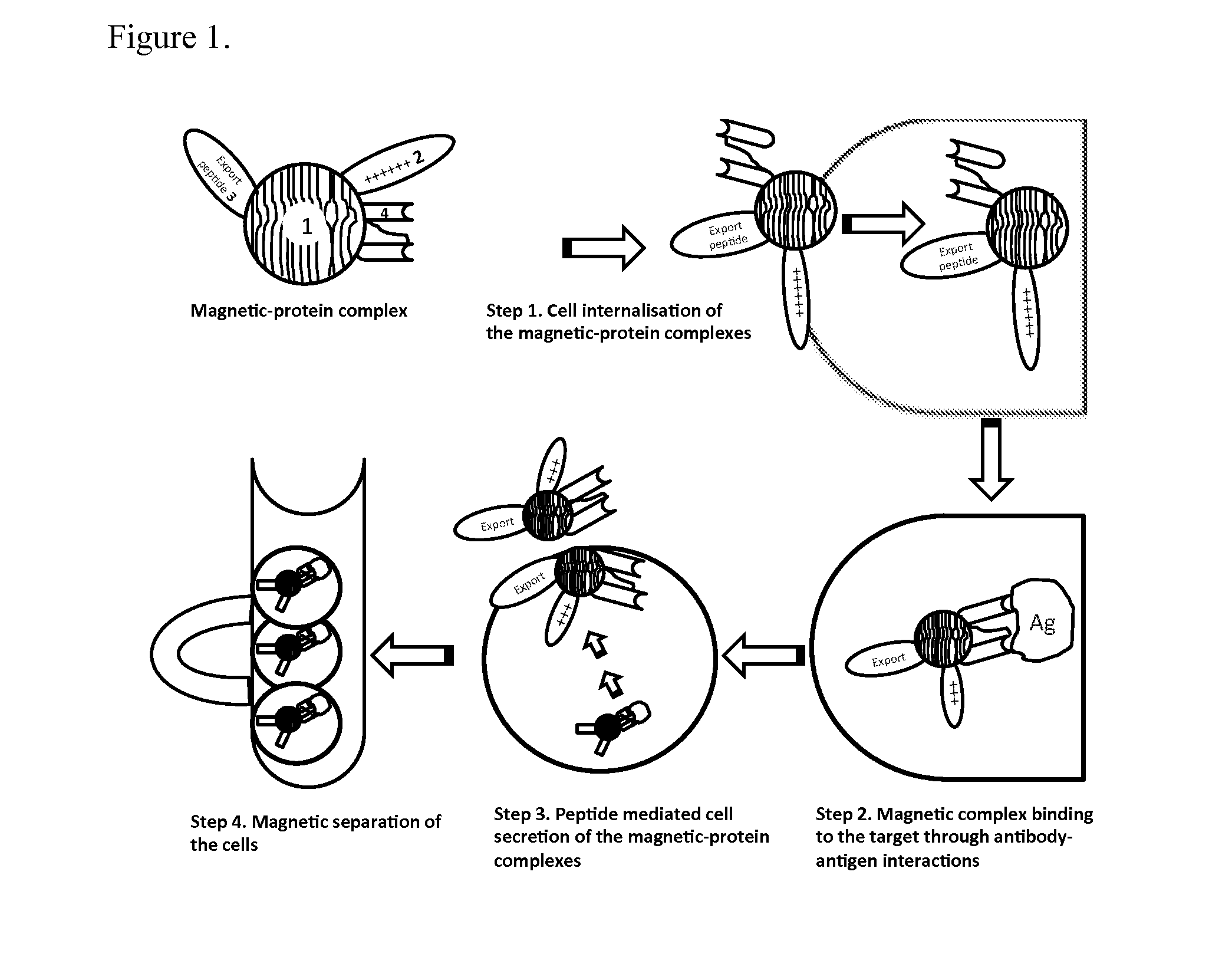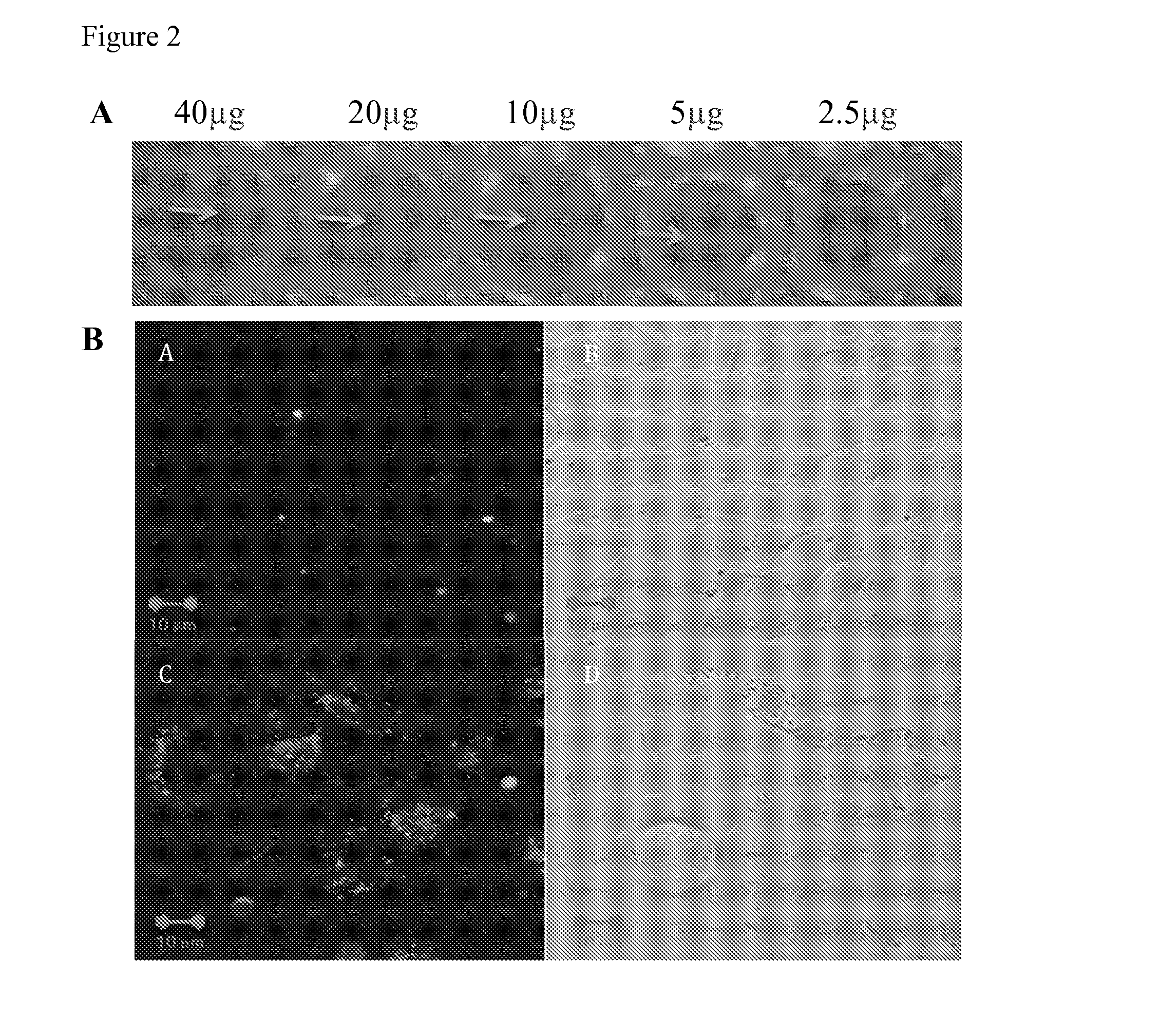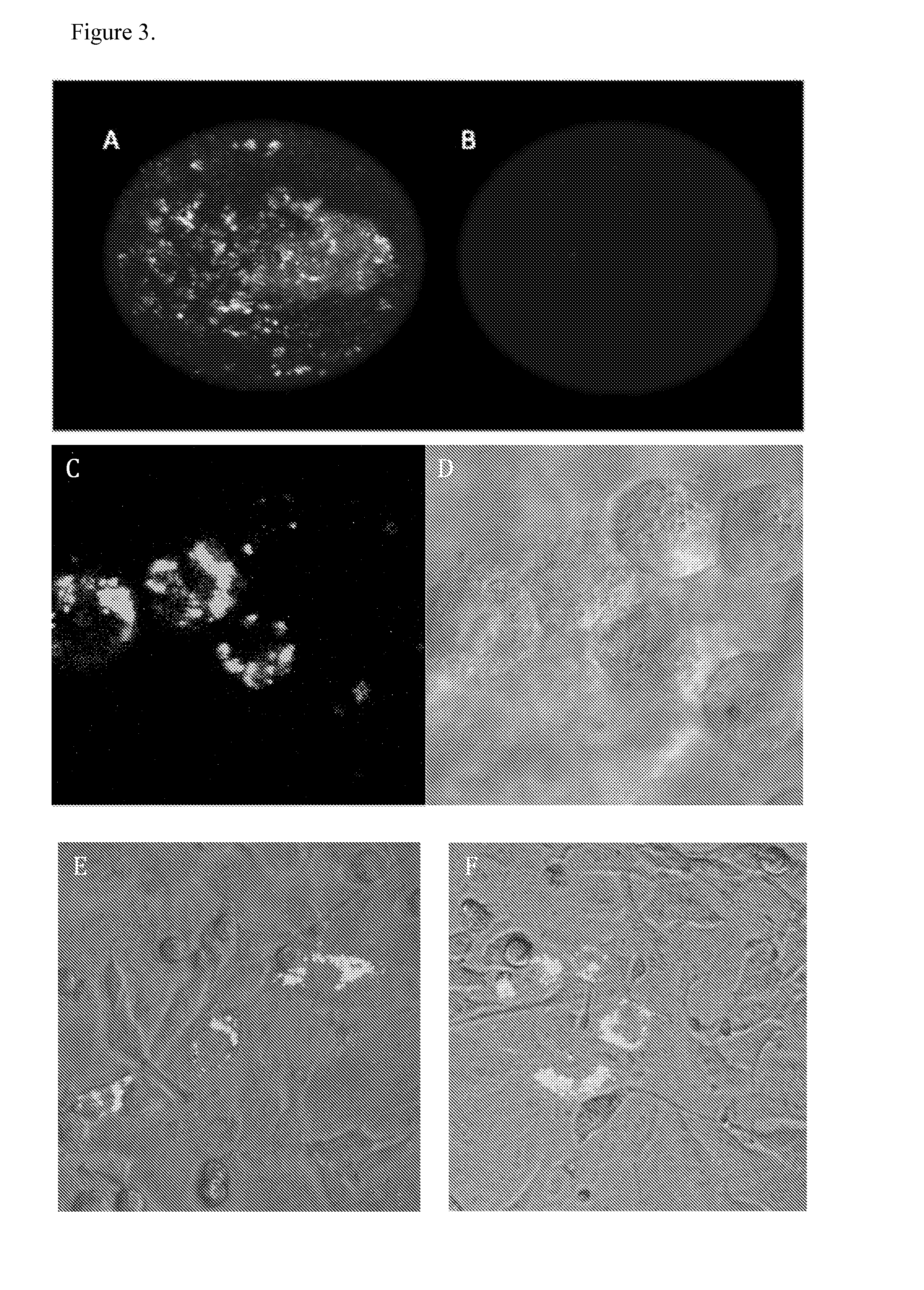Intracellular cell selection
a cell and cell technology, applied in the field of intracellular cell selection, can solve the problems of inability to use cell separation, difficult so far to use intracellularly expressed antigens in cell separation, and limiting, etc., and achieve the effect of overcoming deficiencies
- Summary
- Abstract
- Description
- Claims
- Application Information
AI Technical Summary
Benefits of technology
Problems solved by technology
Method used
Image
Examples
Embodiment Construction
[0068]A method to separate whole live cells using intracellular proteins rather than cell surface proteins (MICELS-magnetic intracellular cell separation) was developed by coupling magnetic particles to scFv antibody fragments and to cell penetrating and cell export peptides (FIG. 1). In this study the proto-oncogene mutant RasG12V was used as a model system to test the MICELS technology. The Ras protein belongs to a class of proteins known as small GTPases, and plays key roles in signal transduction as molecular switches. These proteins are mediated through two switch regions displaying conformational differences between active (GTP bound) and inactive (GDP bound) states (Vetter and Wittinghofer, 2001). Ocassionally, mutations occur in these Ras proteins (K, H or NRAS) resulting in constitutively activated GTP-bound forms that promote cell transformation in a signal-independent manner (Adjei, 2001), thereby, promoting cell proliferation and protection from apoptosis. Approximately ...
PUM
| Property | Measurement | Unit |
|---|---|---|
| pH | aaaaa | aaaaa |
| concentration | aaaaa | aaaaa |
| size | aaaaa | aaaaa |
Abstract
Description
Claims
Application Information
 Login to View More
Login to View More - R&D
- Intellectual Property
- Life Sciences
- Materials
- Tech Scout
- Unparalleled Data Quality
- Higher Quality Content
- 60% Fewer Hallucinations
Browse by: Latest US Patents, China's latest patents, Technical Efficacy Thesaurus, Application Domain, Technology Topic, Popular Technical Reports.
© 2025 PatSnap. All rights reserved.Legal|Privacy policy|Modern Slavery Act Transparency Statement|Sitemap|About US| Contact US: help@patsnap.com



